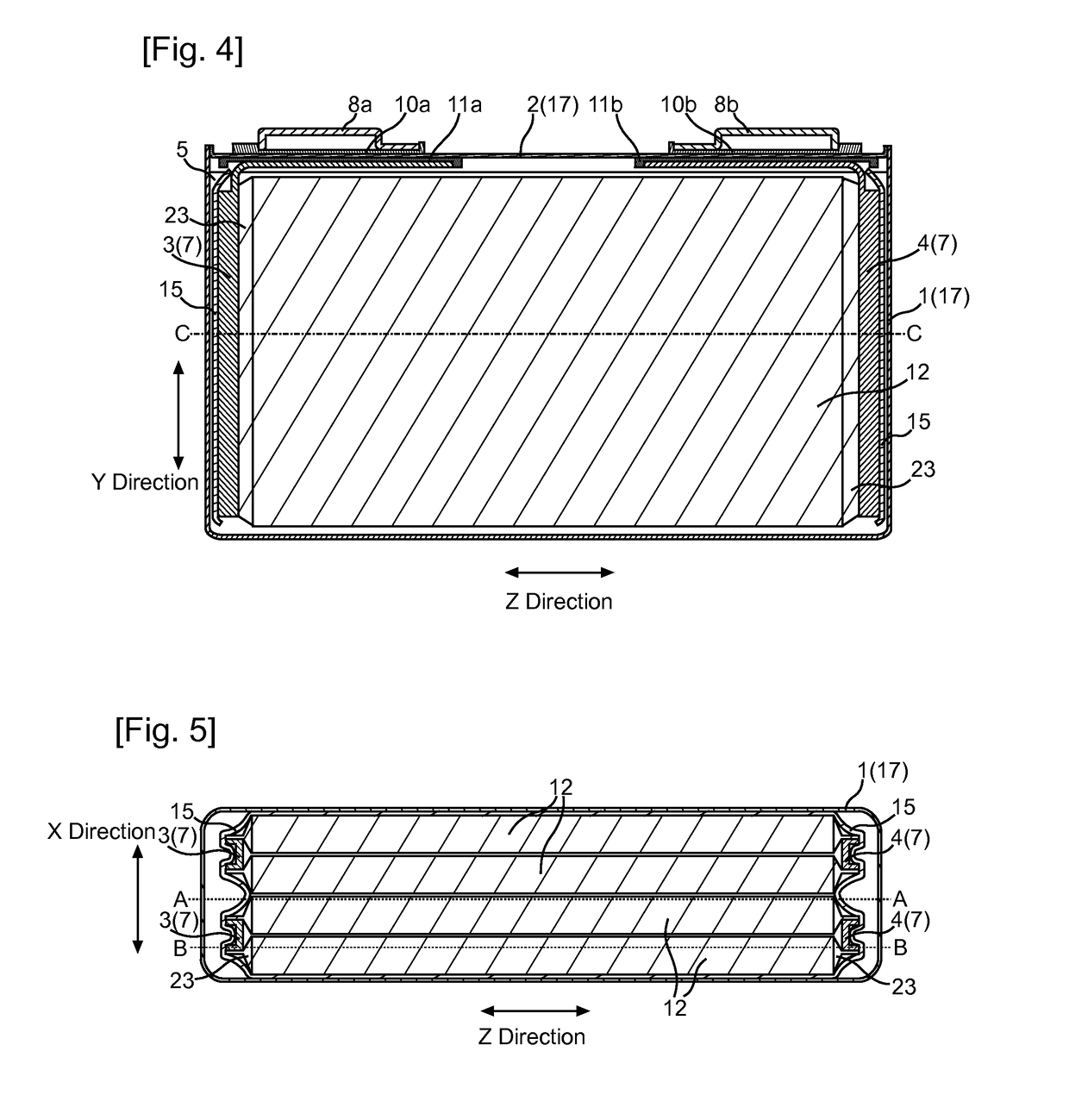Non-aqueous electrolyte secondary battery and method for producing non-aqueous electrolyte secondary battery
a non-aqueous electrolyte, secondary battery technology, applied in secondary cell servicing/maintenance, cell components, sustainable manufacturing/processing, etc., to achieve the effect of suppressing the consumption of flame retardant, raising the flash point of non-aqueous electrolyte solution, and enhancing the safety of the battery
- Summary
- Abstract
- Description
- Claims
- Application Information
AI Technical Summary
Benefits of technology
Problems solved by technology
Method used
Image
Examples
Embodiment Construction
[0028]A non-aqueous electrolyte secondary battery according to the present invention comprises: an electrode body having a structure in which a positive electrode including a positive-electrode active material and a negative electrode including a negative-electrode active material are stacked with a separator interposed therebetween; a non-aqueous electrolyte solution containing a flame retardant; and an outer casing accommodating the electrode body and the non-aqueous electrolyte solution, wherein the non-aqueous electrolyte solution in the electrode body has a flame retardant concentration lower than a flame retardant concentration in a non-aqueous electrolyte solution between the electrode body and the outer casing.
[0029]The non-aqueous electrolyte solution in the electrode body means here a non-aqueous electrolyte solution retained in the electrode body, i.e., a non-aqueous electrolyte solution in pores of electrode active material layers, a non-aqueous electrolyte solution in p...
PUM
| Property | Measurement | Unit |
|---|---|---|
| flash point | aaaaa | aaaaa |
| thickness | aaaaa | aaaaa |
| thickness | aaaaa | aaaaa |
Abstract
Description
Claims
Application Information
 Login to View More
Login to View More - R&D
- Intellectual Property
- Life Sciences
- Materials
- Tech Scout
- Unparalleled Data Quality
- Higher Quality Content
- 60% Fewer Hallucinations
Browse by: Latest US Patents, China's latest patents, Technical Efficacy Thesaurus, Application Domain, Technology Topic, Popular Technical Reports.
© 2025 PatSnap. All rights reserved.Legal|Privacy policy|Modern Slavery Act Transparency Statement|Sitemap|About US| Contact US: help@patsnap.com



